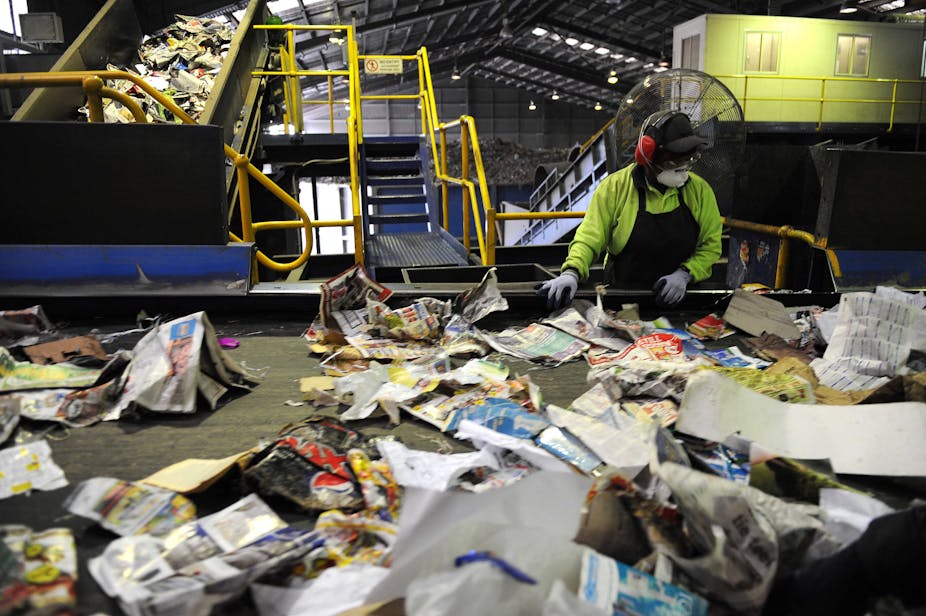When the who’s who of business and world leaders met at last month’s World Economic Forum in Davos a different industrial model was on the agenda: the circular economy.
It’s a term the average person may not have come across yet, but the idea has gained sufficient traction in business, political and environmental circles to be the subject of a report released at the Forum’s influential annual meeting and to be the focus of an initiative supported by leading companies to encourage business to embrace its principles.
In Europe, the biggest annual conference on environmental policy will this year focus on the circular economy and how to unlock its potential, while China’s latest five-year plan has an entire chapter devoted to efforts to “vigorously develop a circular economy”.
In Australia, various NGOs and academic institutions are already engaged with promoting and developing a better understanding of the model.
As such, the core idea behind the circular economy is not new. There is significant overlap with concepts such as “cradle-to-cradle” design and with industrial ecology, which have been around for decades. But it’s only now that these ideas are becoming more mainstream.
So what is the circular economy and why should Australians care about it? While many may assume it is about recycling, the model involves much more than that.
Currently, the dominant mode of making and using things in our economy involves digging up resources to manufacture products and infrastructure, then discarding to landfill or recycling when we are finished with those materials. This has been dubbed the “take-make-dispose” economy.
Globally, in the consumer goods sector about 20% of total material value is recovered while 80% goes to waste.
In Australia, about half the waste we generate is being recycled but with continued growth in economic output, the volume of waste going into landfill here continues to rise.
Often, we are throwing away valuable resources in this “linear” model. Without change, this can only get worse as three billion new middle-class consumers enter the global market in the next 15 years.
The circular economy addresses these unnecessary resource losses.
How does it do that? More recycling is part of it but the circular economy involves much more. It is a model of industrial production which involves designing products so they last longer, so they can be repaired and upgraded, so they can be reused or resold (on eBay, for example), and so their materials can be used in remanufacture.
It is a more “restorative” process, where components and materials can be reused many times.
This will involve a shift on the part of businesses that are accustomed to generating ongoing revenue via planned or “inbuilt” obsolescence.
One example of the sort of switch that might be involved is for businesses to sell services instead of products – for example, selling “hours behind the wheel” rather than selling cars, which is what happens with car-share schemes such as GoGet, Hertz 24/7 and GreenShareCar.
This sort of change is starting to happen, but the report launched by the WEF and the Ellen McArthur Foundation at Davos last month considered a crucial issue: how to scale up the circular economy model.
Dominic Barton, Managing Director of McKinsey & Co, which collaborated on the report, spelled out the business case. The world economy is A$72 trillion in size but applying the circular economy model would lead to at least $1 trillion in savings immediately, he said, and potentially much more in years ahead.
These savings would flow from waste reduction and lower capital requirements for businesses. Other potential benefits include reduced volatility in the price of inputs, along with greater innovation and job creation.
Remanufacturing and recycling in Europe, for example, already employs more than one million people. There, companies such as Renault have found that while remanufacturing is more labour-intensive, reduced waste and lower capital expenses mean profits are maintained.

Project Mainstream, which was launched at Davos, is designed to promote collaboration in pursuit of the circular economy, particularly across the massive global supply networks of key industry sectors. Household names such as Unilever, Cisco, Philips and Renault are some of the global partners with the Ellen MacArthur Foundation in this initiative.
A number of factors will help drive progress towards a circular economy. Businesses will increasingly be motivated to do more with less as water, energy and resources become more expensive in coming decades.
In an era of “big data”, we know more about where resources are, which means it will be easier to recover them profitably. New technologies such as 3D printing offer the potential to reduce materials and energy use, and wastage, by allowing products to be produced on demand rather than just in case.
Meanwhile, there is growing acceptance of economic models based on access rather than ownership and this “collaborative consumption” will also help unlock the untapped value of assets.
For Australia, rethinking the productivity of materials holds promise at what is a challenging time for traditional manufacturing. The circular economy offers the potential of job creation and innovation and a pathway to a resilient economic growth.

